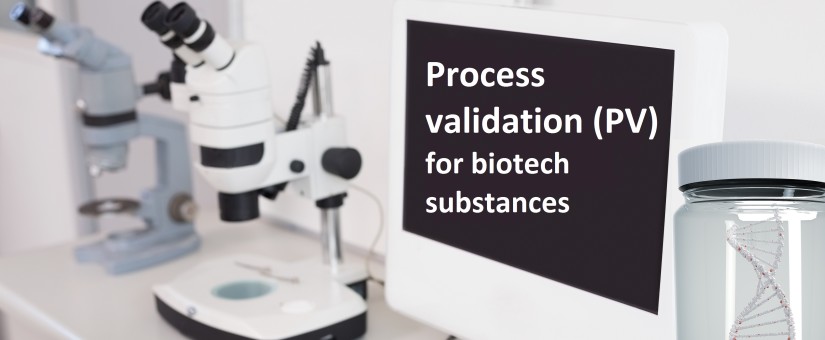
On 29 April 2016, EMA published a new document entitled Guideline on process validation for the manufacture of biotechnology-derived active substances and data to be provided in the regulatory submission. The new guideline will become effective on 1 November 2016.
It should be noted that the need to develop guidance on process validation of biotechnology derived active substances was addressed in the document entitled Concept paper on the need for a guideline on process validation of medicinal products containing biotechnology derived proteins as active substance.
The new guideline covers process validation which includes process characterisation and process verification of biotechnology-derived active substances in the manufacture of medicinal products. This guideline addresses the data requirements for process characterisation and verification for submission of a marketing authorisation application or variation.
It should be underlined here that the validation data to be included in the regulatory submission should cover information relating to the evaluation and the verification of the manufacturing process.
According to ICH Q7 definition: Process validation is the documented evidence that the process, operated within established parameters, can perform effectively and reproducibly to produce an active substance or intermediate meeting its predetermined specifications and quality attributes.
Process characterisation is the activity of defining the commercial manufacturing process. The goal of this stage is to design a process suitable for routine commercial manufacturing that can consistently deliver an active substance that meets its quality attributes. Process characterisation includes process development and process evaluation.
- Process development includes studies to reach a potential design of a future manufacturing process. Process development fulfils an essential role in defining the criteria and conditions to be addressed in further process evaluation and verification studies. Particularly, manufacturing process development should identify which inputs (e.g. material attributes, process parameters) and outputs (e.g. quality attributes, performance indicators) for each process step/unit operation should be further evaluated during process evaluation and verification studies.
- Process evaluation includes studies performed at small and/or commercial scale, to provide evidence that the complete manufacturing process and each step/operating unit have been appropriately designed and controlled to generate a product of the intended quality. Successful process evaluation should thus demonstrate that the design of the manufacturing process, with the preliminary definition of operational ranges along with its control strategy is appropriate for commercial manufacturing. The applicant should study selected inputs and outputs according to their potential criticality and justify their selection. Small scale models are important tools in the development and evaluation of biopharmaceutical manufacturing processes but they must be designed and executed, and ultimately justified, as an appropriate representation of the manufacturing process.
Process verification studies should confirm that the final manufacturing process as established based on the process evaluation studies performs effectively in routine manufacture and is able to produce an active substance or intermediate of the desired quality on an appropriate number of consecutive batches produced with the commercial process and scale.
A prospective process validation, as defined in ICH Q7, is expected for biotechnology-derived active substances. The contribution of data from small scale studies to the overall validation package will depend upon demonstration that the small scale model is an appropriate representation of the proposed commercial scale. Successful demonstration of the suitability of the small scale model could reduce data requirements for process verification (e.g. reduced number of batches) and/or impact on the control strategy (e.g. alternative approach to end product testing, ongoing process verification) by evaluation and understanding of the sources of variability of CQAs.
The panel of controls used in process validation activities (e.g. quality attribute, performance indicator, process parameter and controls implicit in the design of the process) are expected to go beyond the routine control system as described in S.2.2 and S.2.4.
In the case of process changes, the modified process steps should be re-evaluated and/or re-validated, as appropriate. Typically, re-evaluation/re-validation activities for a simple change might be limited to the affected process step, if there is no evidence to indicate that there is an impact on the performance of subsequent (downstream) process steps, or on the quality of the intermediates resulting from the subsequent steps. When the change considered affects more than a single step, more extensive analysis of the change and resultant validation might be appropriate.
Continuous process verification in which manufacturing process performance is continuously monitored and evaluated is an alternative approach to traditional process verification.
In some exceptional circumstances and after consultation with regulatory authorities (e.g. urgent medical need), concurrent validation could be considered.
In the case that a design space is claimed, it may be needed to include a protocol on how movement within the design space will be managed post approval to verify that the design space is still valid when run at commercial scale.
Process validation should not be viewed as a one-time event. Process validation incorporates a lifecycle approach linking product and process development, validation of the commercial manufacturing process and maintenance of the process in a state of control during routine commercial production. Process validation activities do not end at the time of the marketing authorisation, but continue through the lifecycle of the product.




